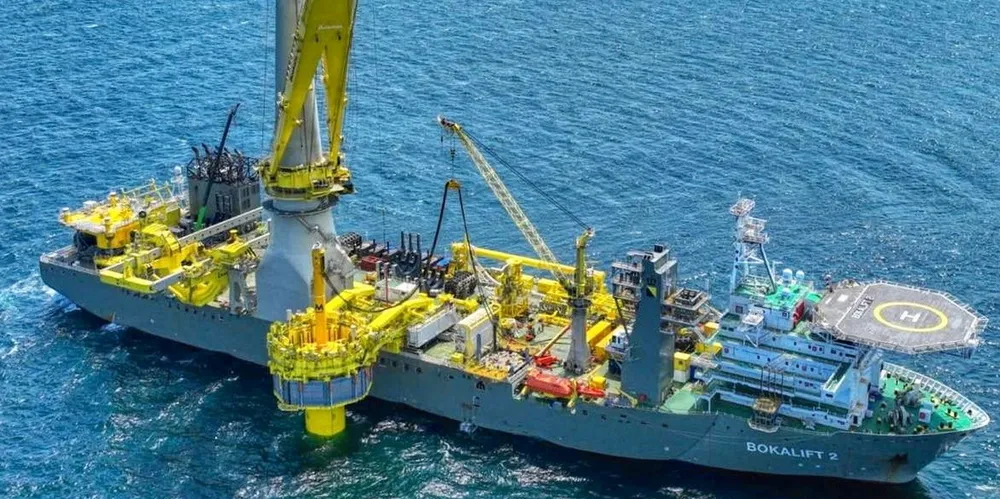Offshore wind build-out 'quarter lower than expected' as cost squeeze bites
Quarterly global market review by TGS | 4C Offshore shows four-year expectations tumbling 23% below previous forecast

Offshore wind specialist TGS | 4C Offshore has slashed its four-year forecast for global build-out by 25% after assessing the impact of soaring supply chain and capital costs on projects.
The quarterly global market report, published today (Monday), analysed the negative impact of higher inflation, rising capital costs and supply chain disruptions on the sector and found that out of 113 offshore wind projects studied, 15GW-worth of capacity is facing financial stresses related to the macroeconomic context, with the problem most significant for those securing power offtake contracts between 2019-2022.
The result of these headwinds, TGS | 4C Offshore found, was project delays and a projected global decrease of 17.5GW (23%) decline in non-Chinese offshore wind projects beginning installation between 2023 and 2027.
"The ramp in demand has resulted in further escalation of prices, or delays for components and their installation. For example, turbine prices have increased over 30% since 2021. Prices, originally driven downward by competitive auctions and a drive for market share, have become unprofitable to deliver," the report stated.
Signs of improvement
The advisory firm’s latest global market review detected some signs of improvement in the third quarter, however, including a record number of construction permits. The 8GW of capacity granted across five countries more than doubled the rates found in recent reports.
These included Hornsea 4 and Awel Y Mor in the UK, Revolution and Ocean Wind 1 in the US, Anma in South Korea, Baltic Power in Poland and Storgrundet in Sweden.
“Historically, permitting rates have fallen short of meeting 2030 goals, making this surge a significant step forward,” the report stated.
Governments worldwide continue to award seabed to developers at a “brisk” rate, with 35.5GW of capacity already so far in 2023.
“While this falls slightly short of the record of 53.5GW awarded during the first three quarters of last year, it almost doubles the 2016-22 annual average of 18.4GW,” the report stated.
Orsted's decision to postponed and redesign Baltica 3 to optimise returns was highlighted in the same Polish context.
PPA routes
A growing appetite for more flexible offtake arrangements through corporate PPAs is also allowing projects to move forward, the report suggested.
It noted that RWE’s third quarter final investment decision on the 1GW Thor array was underpinned by a move toward long-term PPAs, and Northland/Mitsui successfully renegotiated terms with its corporate offtaker to reach financial close and on 1GW Hai Long in Taiwan.
There were also suggestions that the delays reflected a market-led process of adjustment between capacity and demand.
Richard Aukland, director of research at TGS | 4C Offshore, commented: "The delays and cancellations experienced by some present opportunities for others. In the supply chain, vessel operators may benefit from shifting timelines, providing valuable installation capacity when existing contractors are unavailable.
“Additionally, postponed and cancelled projects enable developers to negotiate new terms with recently freed-up supply chain capacity."
The outlook for 2030 also showed a less alarming 9% decrease from the previous forecast, driven by underlying long term demand and strong fundamentals, the report stated.
Build out
The latest TGS | 4C Offshore data showed that 64.1GW of offshore capacity is fully commissioned, with China leading on 31GW, followed by the UK’s 13.7GW and Germany’s 8GW.
China has 7.6GW under construction, followed by the UK on 5.5GW, and both leading nations were also up on the previous quarter.
China (4GW), the UK (3.5GW), and Taiwan (1.2GW) have the most projects in pre-construction after final investment decisions, the report stated.
“Globally, a cumulative 101.5GW is operational, in construction or has made FID. In order to meet our 2030 forecast for credible growth, an increasing (non-Chinese) FID rate of 4.62 GW per quarter is needed,” the report stated.
Currently, the advisory firm’s analysis of offshore wind pipelines plots a top-end credible growth of an additional 166GW by 2030, taking the total global offshore activity, defined as operational or foundations underway, to 267GW by end-2030.
The report noted that most countries are aiming for regulatory reform to streamline processes in response to tightening timelines.
(Copyright)